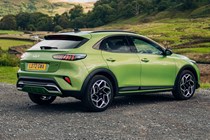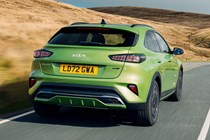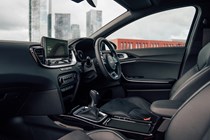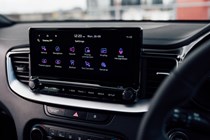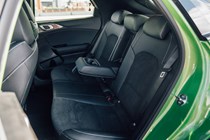Kia Xceed engines, drive and performance
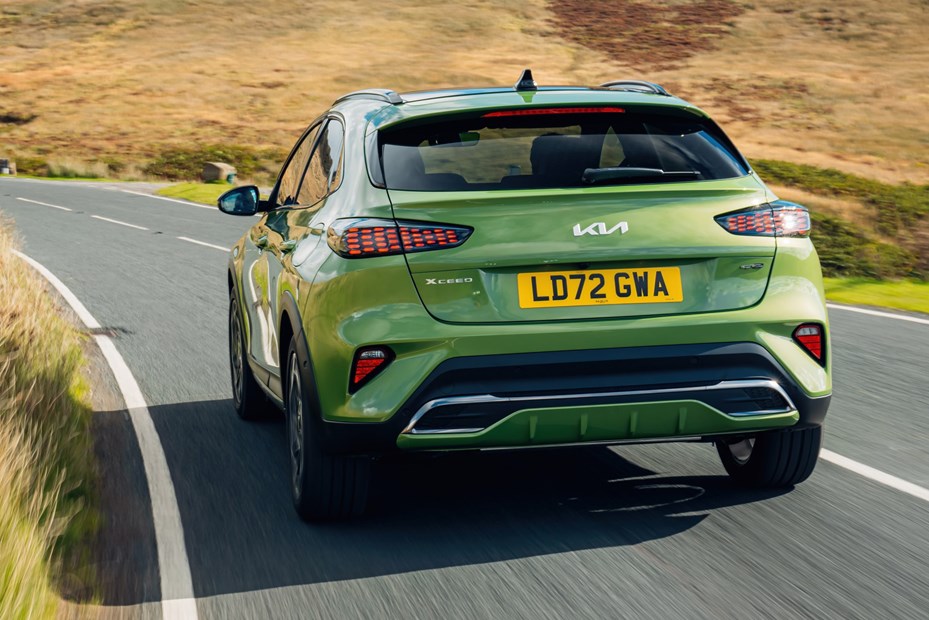
- Some engines missing due to parts shortages
- But they’re coming back – and you can have the 1.5 petrol now
- Choice of manual and automatic gearboxes
Petrol engines
There are two options here. The entry-level engine is a turbocharged 1.0-litre three-cylinder petrol engine with 120hp and 172Nm of torque. But you can’t have that one on the facelifted XCeed at the minute, because the company is struggling to get hold of parts.
We’ve driven it in the pre-facelift car where it’s adequate if slightly sluggish. The six-speed manual gearbox is snappy but the over-light clutch is rather vague, an issue that persists on the other engine option.
Above the 1.0-litre, there’s a turbocharged 1.5-litre four-cylinder petrol engine with 160hp and 253Nm of torque. You can have this engine now, which is good because it’s the better option.
It was introduced to the XCeed line-up in 2021 and quickly gained our favour for its impressive economy. Like we mentioned earlier, if you drive it sensibly you should be able to match Kia’s claimed 47mpg figure, which is good going for a non-electrically assisted petrol engine.
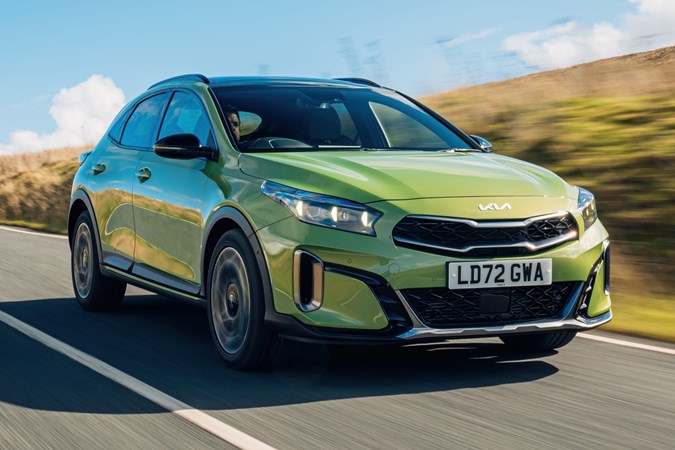
The 1.5-litre petrol isn’t exactly rapid. In fact, it feels a little dull when it’s paired with Kia’s seven-speed automatic gearbox. Like the engine, the transmission is programmed to keep an eye on the fuel gauge and is reluctant to change down when you accelerate in Eco or Normal mode, making it more challenging to overtake on the motorway.
However, the automatic is smooth when you’re not thrashing it and relaxing to drive around town. The extra gear at the top of the ‘box also quietens the engine down once you’re up to speed, which makes the cabin a more pleasant place to be.
Diesel engine
Kia tweaked the XCeed’s diesel range in 2021, too, introducing a clever 1.6-litre four-cylinder 48V mild-hybrid system. The benefit to you is smoother acceleration, lower emissions and better fuel consumption. However, like the 1.0-litre petrol, you won’t be able to have the engine in the facelifted car until Kia can whip its parts suppliers into shape.
It’s paired with Kia’s new Intelligent Manual Transmission which features an electrically operated clutch rather than a traditional hydraulically controlled unit. That might sound complicated, but it isn’t. Because the clutch is electronically controlled, the diesel XCeed can disengage it whenever it sees an opportunity to save some fuel.
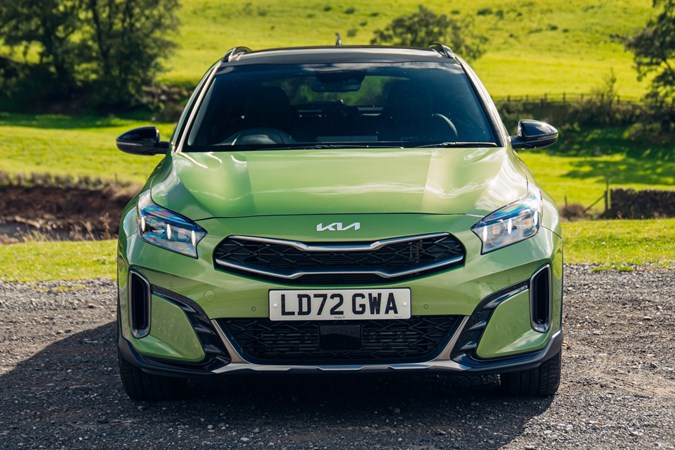
Good news: the driver doesn’t need to do anything. When you lift your foot off the throttle, the XCeed will automatically dip the clutch and turn the engine off – and a little boat icon will appear on the dashboard to let you know you’re “sailing” (which is Kia’s in-house terminology for coasting).
Need to accelerate again? Simply press the throttle or the clutch to wake the engine back up again and you’re away. It’s a very intuitive system which we guarantee you’ll figure out within minutes of driving. Naturally, there is a slight delay while you wait for the engine to turn back on. It isn’t annoying, but it’s worth remembering if you’re lining up an overtake.
Plug-in hybrid powertrain
There’s just one option here. Kia’s PHEV system mixes a 1.6-litre four-cylinder petrol engine with a 60hp electric motor and an 8.9kWh battery pack for a combined output out 141hp and 265Nm of torque. That doesn’t sound bad on paper, but performance is far from sparkling in the real world.
The PHEV system adds around 200kg to the XCeed’s kerb weight, dulling acceleration. Also, Kia decided to fit its plug-in powertrain with a dual-clutch automatic gearbox rather than a continuously variable transmission (like you get in a Toyota Yaris Cross), which doesn’t help.
Normally, we’d prefer the DCT – but it doesn’t seem to work in the XCeed’s case. It’s sluggish and seems to sap power from the electric motor, losing that instant acceleration buyers crave in a PHEV. There are better plug-in hybrid SUVs around, such as Kia’s own Niro or the Peugeot 3008 Hybrid.
What’s it like to drive?
Not bad, not great. The XCeed isn’t as fun to throw down a back-road as a Ford Focus Active, but Kia has struck a keen balance between handling and comfort. And, because it’s only slightly taller than the Ceed hatchback on which it’s based, it doesn’t feel as big as traditionally shaped SUV rivals like the Volkswagen T-Roc and Mercedes GLA.
In fact, it almost drives like a normal car. The petrol models are nimbler than the PHEV, because they don’t have to deal with the added bulk of the electric motor and battery pack. They turn in more sharply and roll less in the corners. The steering feels a little vague, but the same thing can be said of most family crossovers. Real driving enthusiasts would opt for a hot hatchback over the XCeed.

Those clever dampers we mentioned earlier should pay dividends on UK roads, too. During our drive in Germany, we were impressed by how well the XCeed managed to filter out bumps. It’s not as soft as a Citroen C4, for example, but it deals with washboard surfaces better than a Volkswagen T-Roc or BMW X2 – even with the GT-Line specification’s massive 18-inch alloys.



